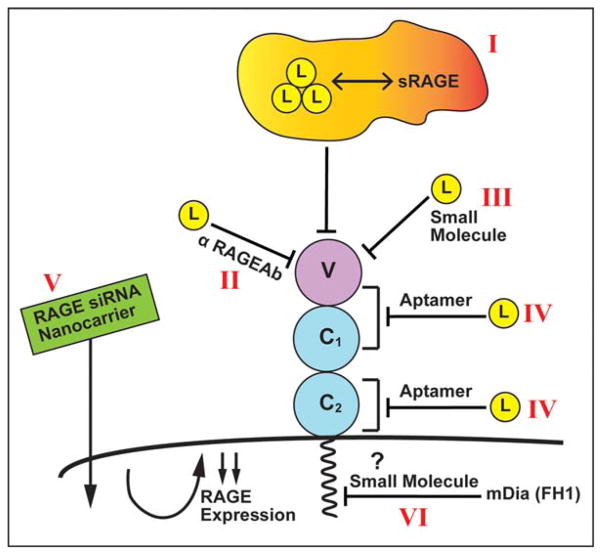Figure 5.
Strategies for targeting RAGE. Experimental evidence from animal models as well as associative evidence in human studies provides strong support for the role of this pathway in the pathogenesis of diabetes and its complications. Indeed, a number of therapeutic strategies targeting RAGE and its signaling pathways are in active therapeutic development. Examples of such strategies are shown in this figure, including sRAGE, the extracellular ligand binding domain of RAGE that sequesters RAGE ligands and blocks their activation of cell surface receptors (I); anti-RAGE antibodies (II); small molecules that block the binding of RAGE ligands to the receptor (III); RAGE peptide aptamers that block ligand binding to the various domains of RAGE (IV); nanocarriers delivering siRNAs to knockdown RAGE expression (V); and small molecules (or other forms of agents) that block the binding of the RAGE tail to the FH1 domain of mDia1 (VI).

